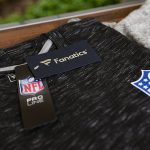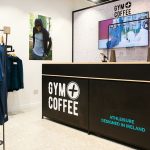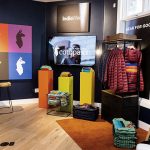Crocs, which received a $200 million investment from Blackstone Group at the close of 2013, is committed to expanding operating margins from around 7 percent currently to 10 percent in the near term with a long-term goal of 12 percent.
The shift in focus from top-line growth to margin enhancement was first spelled out when Crocs reported second-quarter results on July 22 but the details received some elaboration last week at Goldman Sachs Global Retailing Conference by Jeff Lasher, Crocs CFO.
Our focus as an organization is on operating margin, said Fisher. We continue to try to focus all of our attention on improving the performance of the organization from a profitability perspective through a number of different focused initiatives.
Steps include reducing its store count overall globally from about 75 to 100 and reducing its e-commerce platforms from 21 to 11. Thats expected to generate about 50 basis points of improvement in operating margin.
Crocs also reduced about 10 percent of its global headcount in July with the lay off of 183 employees, a move that will cut operating expenses by about $10 million and increase its operating margin by about 100 basis points going into 2015.
Finally, its SAP conversion from its legacy systems will be executed in the early parts of 2015 and expected to deliver about 100 basis points of operating margin improvement from the efficiencies gained on IT infrastructure spending as well as the ancillary benefits of running a more global enterprise platform.
Lasher said those three initiatives will get help Crocs move form 7.5 percent operating margins to the 10 percent level. Moving from 10 to 12 percent will involve focusing our product on our core marketplaces around the globe and improving our market position and our brand market share over time.
Gross margins are being impacted by declines in the yen and euro but the stronger dollar over time will help offset some of the rising China labor costs. But Lasher said the greater margin focus is on focusing our attention on the products that make sense for us as a brand, focusing our core customer and reducing our reliance on our own direct-to-consumer channel for gross margin purposes.
The turnaround plan also calls for a focus on its core molded footwear heritage with a reduction of the SKU proliferation that has occurred over the past few years. Non-core product and brands are being eliminated. One cohesive global brand positioning is being emphasized across regions along with a consistent product portfolio to support both supply chain efficiencies and messaging. Finally, the company will prioritize direct investment in larger-scale geographies – specifically China, Japan, Korea, United States and Western Europe – to focus the company’s resources on the biggest opportunities.
From a wholesale perspective, Crocs will particularly focus on the family footwear channel. Said Lasher, The channels that make the most sense for us is where the family shops because our customer tends to be 35 to 50-year-old woman with a middle-class, upper middle-class income. And were pretty excited to continue to offer her benefits that our brand can bring, easy, on and off, colorful and fun products that were going to deliver the marketplace. The most efficient channel for us from a wholesale perspective to bring our overall product messaging alive is in the family footwear channel, not to say that the rest of our all customers arent important.
As far as product, Lasher said the SKU rationalization isnt necessarily increasing its penetration of its core clog but focusing on the injected molded casual footwear that has long resonated with customers.
It’s really getting back to basics around clogs, flips, flats, sandals, men’s loafers, women’s wedges and some other product offerings that really makes sense to our customer rather than kind of chasing revenue or chasing opportunities from a product perspective into markets that we dont have as much of a dominant position in, and it’s more challenging for us to do the marketing necessary to really compete in, said Lasher.
He did note that Crocs does plan to have some really strong customer positioning in 2015 that we can market our products better in 2015. But really the offerings in 2016 or the early things that weve seen from a product group in 2016 are pretty encouraging.
In the near term, Lasher said Crocs continues to face short-term challenges in China and the rest of Asia, specifically Korea and Hong Kong, with negative comps expected in the third quarter. But Europe is doing pretty well with positive comp rates and Crocs is seeing some positive results in the United States from our fall/holiday in 2015 line, so encouraging retail performance at our store level economics that weve seen in 2014 so far in the third quarter.














